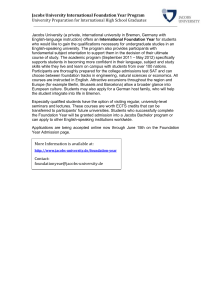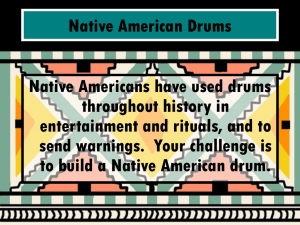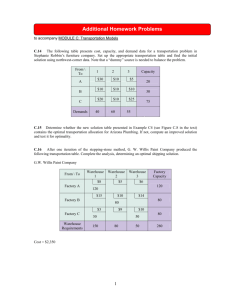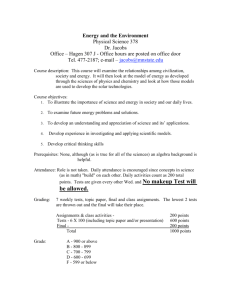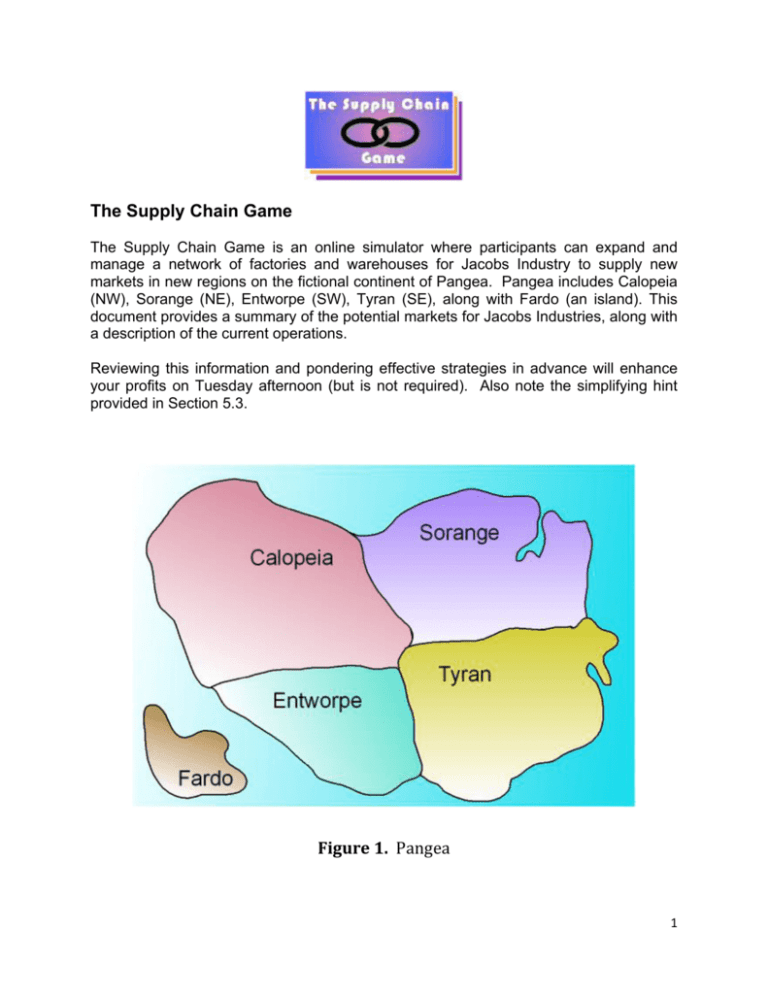
The Supply Chain Game
The Supply Chain Game is an online simulator where participants can expand and
manage a network of factories and warehouses for Jacobs Industry to supply new
markets in new regions on the fictional continent of Pangea. Pangea includes Calopeia
(NW), Sorange (NE), Entworpe (SW), Tyran (SE), along with Fardo (an island). This
document provides a summary of the potential markets for Jacobs Industries, along with
a description of the current operations.
Reviewing this information and pondering effective strategies in advance will enhance
your profits on Tuesday afternoon (but is not required). Also note the simplifying hint
provided in Section 5.3.
Figure1.Pangea
1 2Markets
2.1 The Product
Jacobs Industries produces a single product (an industrial chemical) that can be mixed
with air to form foam that is:
Lightweight;
Stable over a very wide range of temperatures;
A very efficient thermal insulator; and
A very efficient acoustic insulator.
Jacobs sells to manufacturers of products that will pay a premium for foam insulators
with these properties. All of Jacobs' customers purchase the foam chemical as a
substitute for competitors' products. If Jacobs cannot meet the order when it is
received, the customer makes its purchase from a competitor without any loss of future
demand.
Jacobs began marketing to manufacturers of air conditioner retrofit kits on day 1 and on
day 640 began extending to other markets in other regions. Additional information on
the regions and markets is provided below.
Jacobs will begin migrating demand to a new technology using a different supply chain
network on day 1095, as described in Section 2.7 (End of Life Issues).
2.2 Calopeia: Air Conditioner Retrofit Kits
The original application of the foam was for kits to retrofit or repair old industrial air
conditioners. The properties of the foam made it possible to improve the efficiency of
existing air conditioners within the constraints imposed by existing facilities. The
industry that builds and sells these kits is concentrated entirely in Calopeia. The market
is highly seasonal but otherwise very stable. There are no long-run market trends,
either upward or downward. The size of orders is random with an average size of 7 or
8. Orders also arrive randomly. A representative demand profile is provided in Figure
2, and you will have the opportunity to explore actual historical demand on-line (Section
5.1).
2 Figure 2. Representative Demand Profile for Calopeia
2.3 Sorange: Hardwood Floor Laminates
Hardwood floors are coming back into fashion. A common product addressing this
market is a laminated wood panel that is made to snap together to easily cover a floor.
However, poor acoustic properties of the laminates have been a problem in apartment
buildings and condominiums where sound is easily transmitted to downstairs neighbors.
Manufacturing of the laminates is concentrated in Sorange and two large manufacturers
of laminates have recently added premium product lines with better acoustic insulation.
These laminates are a market for Jacobs' foam chemical.
Although order size and arrivals are random, the long run average demand will grow
linearly from day 640 until day 1095. The average order size is about 8 drums and
demand is not seasonal. A representative demand profile is provided in Figure 3, and
you will have the opportunity to explore actual historical demand on-line (Section 5.1).
Figure 3. Representative Demand Profile for Sorange
3 2.4 Tyran and Fardo: Premium Home Appliances
Customers of premium home appliances, especially driers and dishwashers, are willing
to pay a premium for sound insulation. An appliance manufacturer with factories in
Tyran and Fardo is offering a premium acoustic insulation option on several of its highend appliances. These appliances are a market for Jacobs' foam chemical.
Orders arrive to Jacobs directly from the appliance factories. Both order size and order
arrivals are random. Demand began on day 640 and grew to its final long-run average
a month later. Long-run average demand is not seasonal and is not trending either
upward or downward. The average order size is about 8 drums. A representative
demand profile for Tyran is provided in Figure 4, and you will have the opportunity to
explore actual historical demand on-line for both Tyran and Fardo (Section 5.1).
Figure 4. Representative Demand Profile for Tyran
4 2.5 Entworpe: Insulation Products for Commercial Builders
A single manufacturer supplies insulating quilts for insertion into walls in new
construction projects where both wall thinness and thermal insulation are important.
These projects include laboratories inside office buildings and saunas inside
commercial gyms. The insulating quilts are a market for Jacobs' foam chemical.
The quilt manufacturer uses a reorder point policy where 250 units are purchased
whenever its inventory drops to a predetermined level. So although orders are always
for 250 units, orders arrive randomly. Demand started on day 640 and was stable by
day 670. Long-run average demand is not seasonal and is not trending either upward
or downward. A representative demand profile is provided in Figure 5, and you will
have the opportunity to explore actual historical demand on-line (Section 5.1).
Figure 5. Representative Demand Profile for Entworpe
2.6 Fardo: Private Airplanes
A make-to-order assembler of single-engine airplanes uses the foam as an insulator.
The order size and order timing are random, although the average order quantity is
about the same as that of the appliance factories in Fardo and Tyran described earlier.
Demand began on day 640 and stabilized by day 670. Long-run average demand is not
seasonal and is not trending either upward or downward.
A representative demand profile for Fardo is provided in Figure 6, and you will have the
opportunity to explore actual historical demand on-line (Section 5.1).
5 Figure 6. Representative Demand Profile for Fardo
(both appliances and planes)
2.7 End of Life Issues
A new foam technology is in development that will render the current technology
obsolete. Factories producing the new foam will come online on day 1095. All
customers are aware of the pending new technology, and as result, all demand will
abruptly end on day 1095. All unsold inventory will be worthless on day 1095.
3Operations
3.1 Operations Overview
Jacobs' distribution network consists of a single factory and a single warehouse, both in
Calopeia. The warehouse only supplies air conditioner retrofit kit manufacturers, who
are all in Calopeia.
Jacobs produces its chemical in batches, loads the chemical into small plastic drums,
and then transports the drums to the warehouse by truck. The warehouse sends drums
to customers as orders are received.
3.2 New Markets
About a year and a half into operations, Jacobs began looking for new markets and
discovered a handful of industries where Jacobs foam would be a superior substitute for
the insulating foam currently used in those industries. Marketing campaigns for these
target customers began on day 640. Regular communication with target customers
allows Jacobs to monitor the demand for its product in each of the new markets.
However, Jacobs has not begun actually selling to any of the new markets yet. Jacobs
is only selling to the original market in Calopeia.
6 3.3 Decisions
Jacobs management would like to serve the new markets it has identified if serving
those markets is profitable. However, serving those markets could be logistically
complex. Some decisions to be made include:
Which new markets should Jacobs sell to?
When should Jacobs begin serving its new target markets?
Should Jacobs continue to serve its original market?
Should the factory in Calopeia be expanded?
Should factories in other regions be built?
Should warehouses in other regions be built?
How should Jacobs schedule production?
How should inventory in the warehouses by managed?
How should chemicals be transported from factories to warehouses?
Which warehouses should serve each target market?
You have been hired to make these decisions. Your goal is to maximize cash position
generated by the foam technology over its lifetime. On day 1095 the technology will
become obsolete due to another technology currently in development.
3.4 Production Parameters
A factory can only produce one batch a time. The more capacity a factory has, the
faster it produces a batch of a given size. The cost of a factory building is $250,000
regardless of the factory capacity. The cost of factory equipment and fixtures is
proportional to capacity: Capacity of one drum per day costs $25,000. For example, the
cost to build a new factory with a capacity of 5 drums per day is $250,000 + (5)$25,000
= $375,000. Adding an additional capacity of 2 drums per day later would cost (2)25,000
= $50,000.
Capacity cannot be retired.
Production in factories is carried out in batches, where each batch is an integer number
of drums set by you. The cost to produce one batch equals $1500 plus the number of
drums in the batch times $1000. For example, the cost to produce a batch of 10 drums
is $1500 + (10)$1000 = $11,500.
7 3.5 Warehousing Parameters
A new warehouse costs $50,000. There is no practical limit to the number of drums a
warehouse can hold.
Jacobs pays insurance and other out-of-pocket holding costs on chemicals once
production is complete. The holding costs for one drum for one year is $100, whether
the drum is in transit to a warehouse or the drum is physically in a warehouse. There
are no such holding costs for work-in-process inventory in the factory.
3.6 Transportation Parameters
Finished drums are shipped from the factory to the warehouse as soon as production is
completed. The drums can be shipped by either truck or mail. One truck can carry 200
drums. If the batch is less than 200 drums, then less than a truckload will be used. The
cost of full or less-than-full truckload is the same. If drums are shipped by mail, the
shipping cost is proportional to the number of drums being mailed. Transportation costs
are provided in Table 1, and transportation times are provided in Table 2.
Table 1. Summary of Transportation Costs
Origin and Destination
Cost per Truckload Cost to Mail One Drum
Same region
$15,000
$150
Different regions on continent
$20,000
$200
Between continent and Fardo
$45,000
$400
Table 2. Summary of Transportation Time
Origin and Destination
Truck
Mail
Same region
7 days
1 day
Different regions on continent
7 days
1 day
Between continent and Fardo 14 days
2 days
8 3.7 Financial and Other Parameters
All customers pay $1450 per drum of foam. The drum must be shipped within 24 hours
of receiving the order or the order is lost. Warehouses may partially fill orders and one
order may be filled from multiple warehouses.
All order fulfillment is by mail, so the cost to fulfill an order is:
$150 per drum if the order is in the same region as the warehouse
$200 per drum if the order and the warehouse are in different regions on the
continent
$400 per drum if the order is on Fardo and the warehouse is on the continent, or
the order is on the continent and the warehouse is on Fardo.
Interest accrues on cash at 10% per year, compounded daily.
4Assignment
Your team has been hired to manage the supply chain for the Jacobs Industries. You
can make the following changes to the supply chain:
New factories and warehouses in regions outside Calopeia.
Capacity additions to existing factories.
For each factory the finished goods inventory level at each warehouse that would
trigger production of a new batch for that warehouse.
For each factory, the size of batch produced for each warehouse.
Whether batches are transported from each factory to each warehouse by mail or
by truck.
Your objective is to maximize the cash generated by the foam technology over the
remaining year of its lifetime. On day 1095 the game will end and all inventory and
capacity will be obsolete.
The simulation will run continually at the rate of 8760 simulated days per real day, or 1
simulated day about every 10 seconds. You will have control of the game from day 730
to day 1095, or 365 days total. The game will conclude exactly 1 hour after it started.
During that time you can access your supply chain continuously.
The winning team is the one with the highest cash position on day 1095.
9 5AdministrativeDetails
5.1 Logging In
Before the game begins, you will have the opportunity to analyze historical data. This
information should be available after Friday evening (August 2, 2013) at
http://sc.responsive.net/sc/ellis/entry.html
You can log in using:
Team ID: preview
Password: preview
If you have popup blocker, you will need to allow popups from the web site. Also, if you
have modified your security settings, make sure you have not disabled cookies. There
are some less common problems that students sometimes have:
If you get a "connection lost" message at the top of the screen after you log in,
then click here (http://rlt.responsive.net/nocookie.html)
If you are not able to view the data plots, then click here
(http://rlt.responsive.net/nojava.html).
To open a new window and log in, then click here
(http://sc.responsive.net/sc/ellis/entry.html).
5.2 Viewing Data and Changing Parameters
After you log in, you will see three icons in the Calopeia region: headquarters, a factory,
and a warehouse. You are allowed a maximum of one factory and one warehouse in
each of the other four regions. A black factory or warehouse icon signifies the factory or
warehouse is currently operational. A gray icon signifies the factory or warehouse is
under construction. To begin construction of a new factory or a new warehouse, click on
the region where you would like to begin construction and fill in the resulting form.
Clicking on each icon will open a window presenting buttons to view historic data and
make changes:
Plot past demand, past lost demand, and your firm's past cash position. If
there are multiple warehouses, there will also be a description and choice of
fulfillment policies.
Plot past WIP inventory, add production capacity, and change order point,
order quantity, shipping method, and priority to each warehouse.
10 Plot past finished goods inventory and shipments. Change order point, order
quantity, shipping method, and priority from each factory. Select the regions
in which that warehouse can fulfill demand.
The terms in the forms are hyperlinked to more detailed definitions.
The menu bar below the map of Pangea provides additional functions:
Overall Standing allows you to view all the teams' current cash balance in rank
order.
History allows you to view all your historic changes to your supply chain.
Cash shows the starting cash, and uses and sources of cash that resulted in
your current cash position.
Update refreshes your screen, updating the cash position and day appearing
above the map of Pangea
Quit logs you out.
5.3 A Few Notes and a Hint
In a typical simulation, a year or two years of demand is simulated during a week of
actual time. Students analyze historical demand in advance and then make adjustments
as the game progresses throughout the week. For this session, a year of demand is
simulated during an hour of actual time to demonstrate the capabilities of simulation.
This limits the time for analysis by the participants, but allows time to gain familiarity
with ways to enhance supply chain instruction.
Hint: For this session, strive to meet demand in one of the new regions profitably and
consider this a success (rather than trying to expand to all four new regions). In other
words, develop an effective supply chain for Calopeia and one other region initially. If
this is successful, then you can expand further.
11 AuthorsandTermsofUse
Additional information on using this and other simulation games in your courses is
available from:
Sam Wood
Responsive Learning Technologies
wood@responsive.net
info@responsive.net
http://responsive.net/
The Supply Chain Game was developed under the supervision of professors Sunil
Chopra and Philipp Afeche at the Kellogg School of Management at Northwestern
University.
Copyright 2004. All rights reserved. No content from the Supply Chain Game or
documents supporting the Supply Chain Game may be used without the permission of
Responsive Learning Technologies.
12



